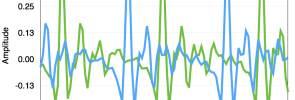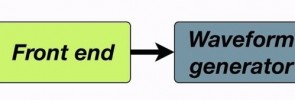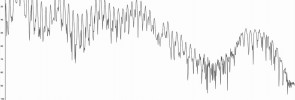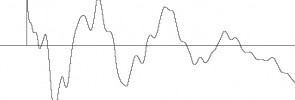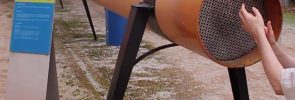Token passing is a really nice way to understand (and even to implement) Viterbi search for Hidden Markov Models. Here we see token passing in action, and you can look at the spreadsheet to see the calculations.
To keep things simple, we are ignoring transition probabilities in this example. It would be simple to add them – tokens would just multiply their likelihood by the transition probability every time they went down an arc.
To learn more, read this tech report.
